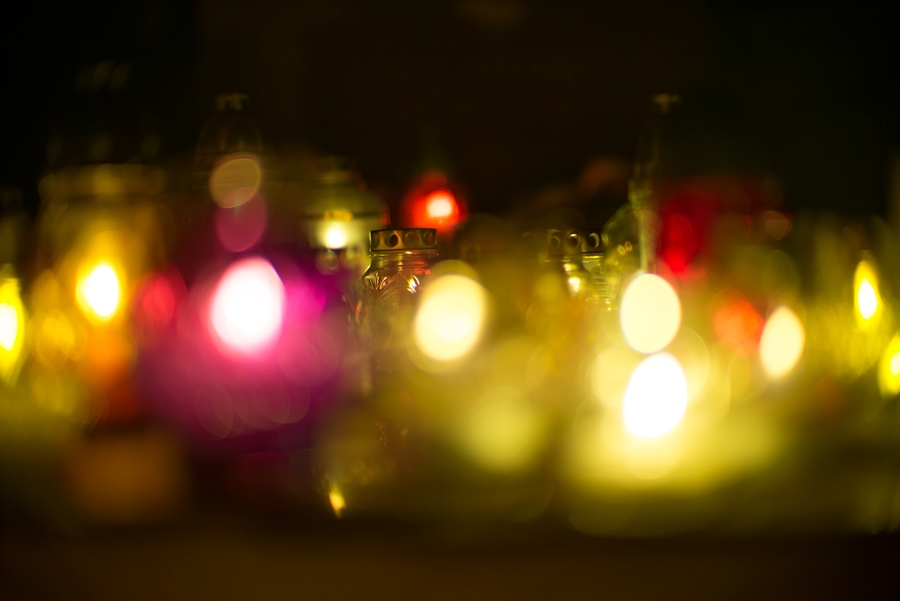To walk around the ‘old town’ of Warsaw – mixing with the tour groups snaking past the collection of ornate churches, souvenir parlours and tourist-friendly antique shops, cafés and restaurants – results in a disconcerting feeling. There is something slightly off-kilter about the scene. Something not quite right, which at the time I had trouble identifying. It’s only later, when visiting the seventh edition of the annual Warsaw Under Construction festival (staged by the city’s Museum of Modern Art and Museum of Warsaw), that I realise what it is. The cobbled streets in the apparently medieval old town feel far too wide for the rows of tall narrow houses that run on either side of them. In actual fact this old town is nothing of the sort: like most of Warsaw, its construction was overseen between 1945 and 51 by the Warsaw Reconstruction Office, the body formed to rebuild a city more than 80 percent destroyed during the Second World War.
An argument between modernists and traditionalists had split this new government office. The former wanted to start again and implement a modernist grid; the latter to faithfully restore the old city. The modernists won out – Warsaw is mostly now laid out without any discernible centre – but the oldest bit of the city was recreated. Yet as a concession to practicality, the architects widened the roads of this sham old town to allow better car access. Hence my learned sensibilities to space and architecture – that old areas have narrow winding streets and spacious urban planning is a twentieth-century invention – were thrown off. This sense of instability is perhaps apt. Warsaw Under Construction’s main exhibition, Reconstruction Disputes, housed not in either of the museum spaces but in a former school (the building is being sold off by the government for private redevelopment; with an average of 1.3 children per woman in 2013, Poland has one of the lowest fertility rates in the world), chimes with two other concurrent shows in the city, at Zacheta National Gallery of Art and Foksal Gallery Foundation. Taken together, the exhibitions suggest a country in a state of flux, concerned for its future, looking to its past.
As is often the case, this uncertainty comes from a society that does not seem to have fully dealt with its history, and particularly the aftermath of a terrible twentieth century. Logically Poland should be running along smoothly and looking to the future with ease – it avoided the euro crisis in part because it was denied monetary union when it joined the EU in 2004, and the country has one of the highest economic growth forecasts on the continent.
Yet signs of pervading insecurity – see the electorate’s maddening embrace of the far right Law and Justice party in recent elections, for example – are reflected in the striking titles to Piotr Uklański’s new photographs, taken by the artist on a series of roadtrips across the country and being shown at Foksal. Untitled (Polish-German friendship is not for me; I’ve hated Germans since the day I was born) (all works 2015) captures a red-and-yellow blur of candle flames and sits alongside images that range from Auschwitz at sunset to grey, melancholic portraits of war memorials. While this invocation of Nazi atrocities would always feel devastating, what really gut-punches is the sheer sadness of the fact that ripples from this trauma are still being felt – in the psyche of this artist, at least. With his out-of-focus photograph of blurred pink tulips, Untitled (And in the spring let me see spring, not Poland), Uklański seems to acknowledge an inability to shake off the past. If Uklański is reflecting a more general attitude, it’s as if the country is as unsure and afraid of the future as the faces that endlessly populate the photographs, original documentary footage and paintings of Zacheta’s historic museological exhibition Zaraz Po Wojnie (Just After the War). Nor is this after-effect just psychological.
The day after my visit to Reconstruction Disputes, I’m walking along a block fairly close to the Palace of Culture and Science, a rare landmark in the city. I pass the remains of a 1950s brutalist block, half-torndown, its guts hardly covered by the green safety netting erected over the side. It used to be a Warsaw government building; now, like the old school, it is being sold off by the state for commercial redevelopment into offices and shops. It immediately reminds me of another ripple effect. For the Warsaw Reconstruction Office to achieve its postwar masterplan, in the early 1950s Bolesław Bierut, the first general secretary of the Central Committee of the Polish United Workers’ Party, annulled all private ownership of central Warsaw land laid waste to by the war. With this nationalised land now being sold off in 2015, there is a growing resistance movement arguing that, even after 65 years, a process of profit restitution to the original prewar owners (or their descendants) should be put into place. I didn’t go to Poland looking for history, but as this tangible battle shows, alongside the less concrete fight with shadows of the twentieth century, for the time being at least the past seems inescapable.
This article was first published in the December 2015 issue.
